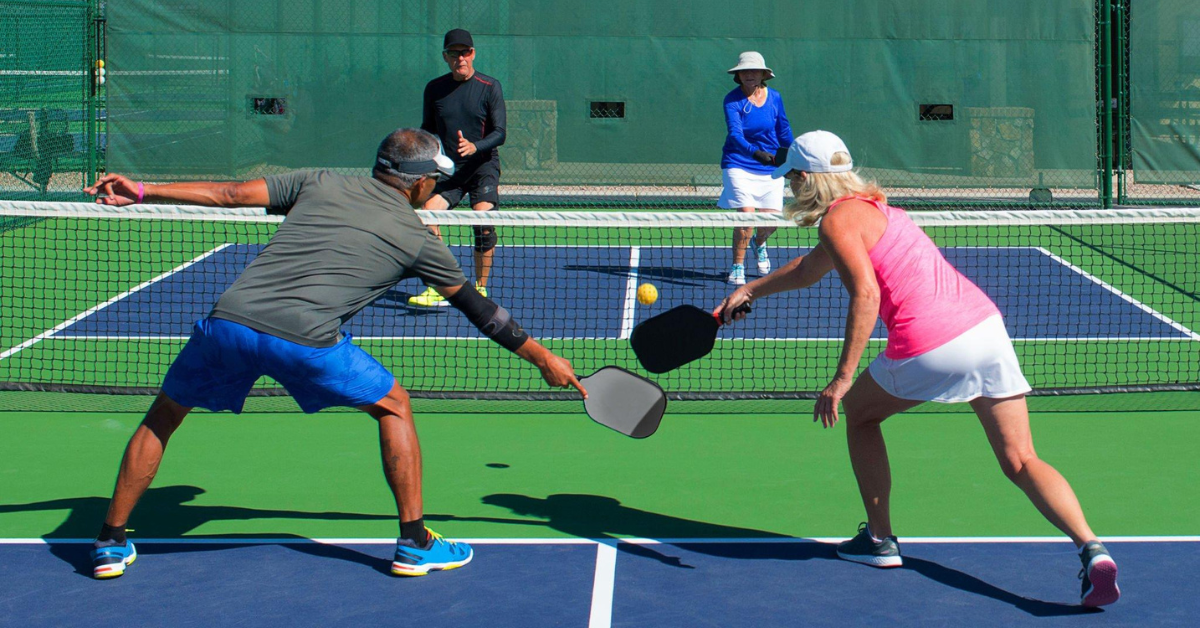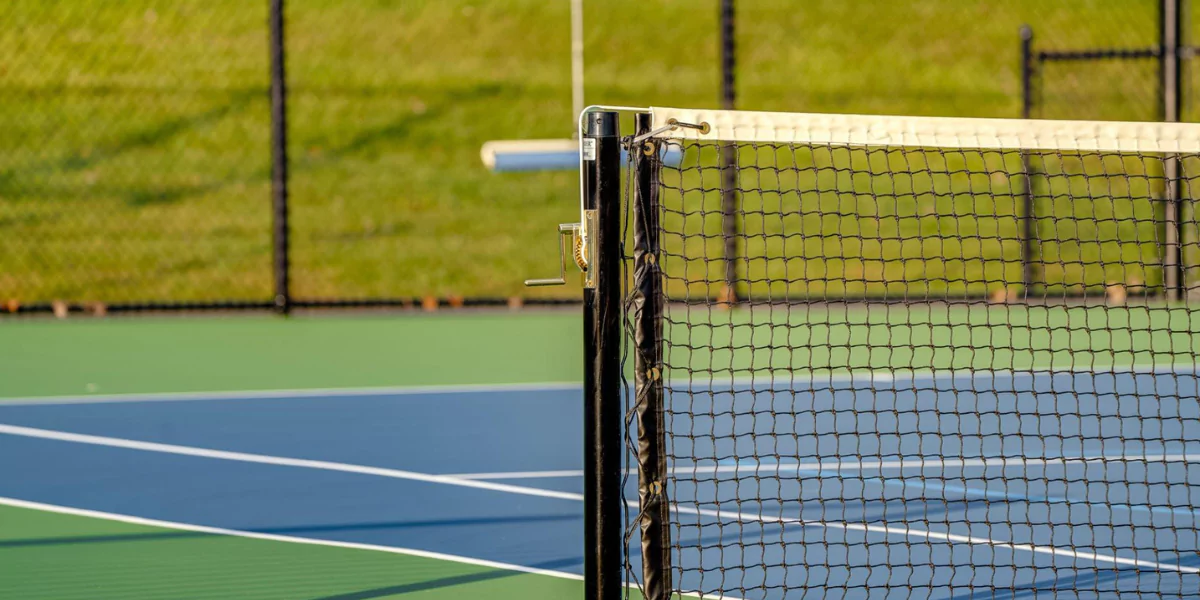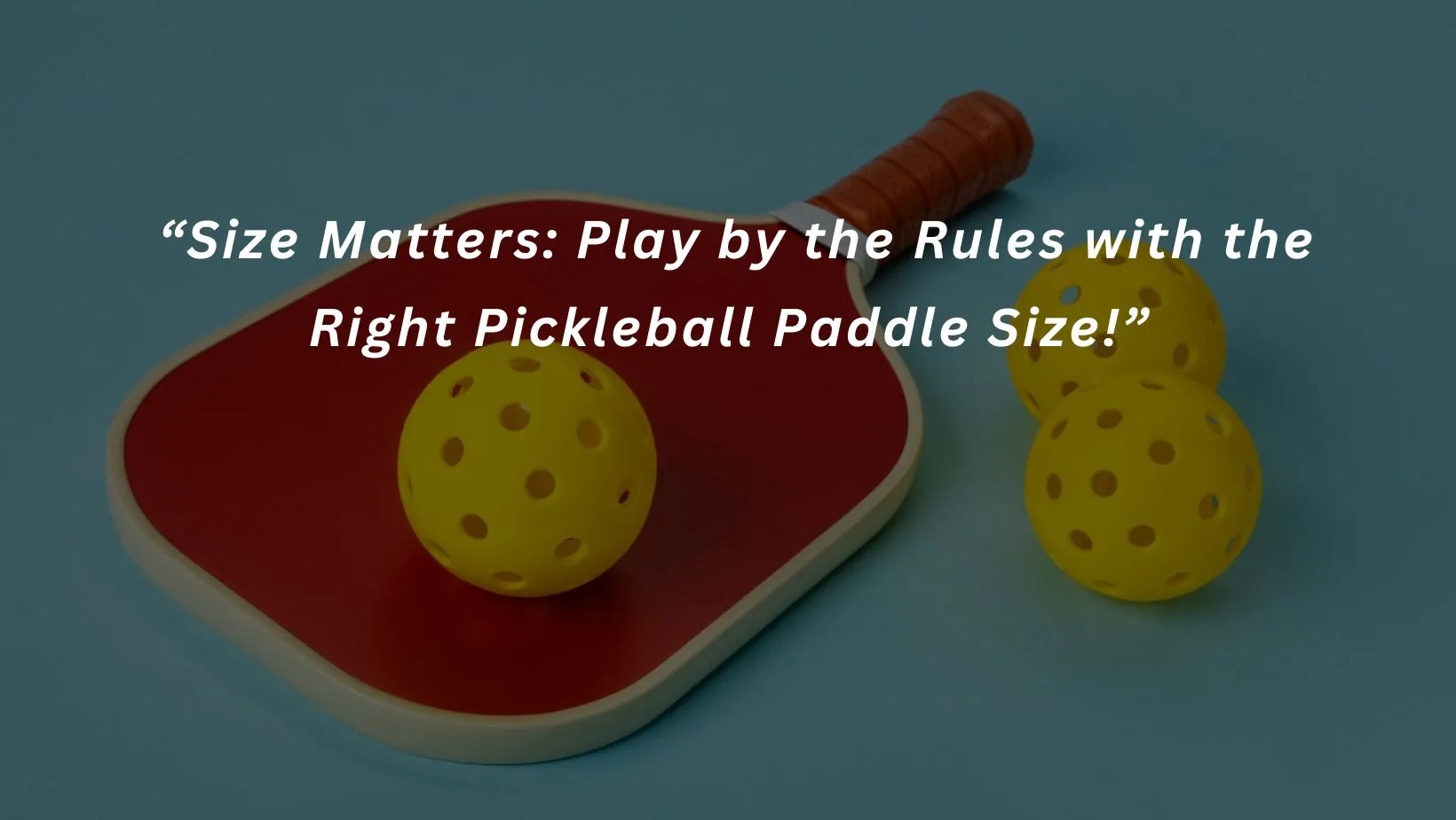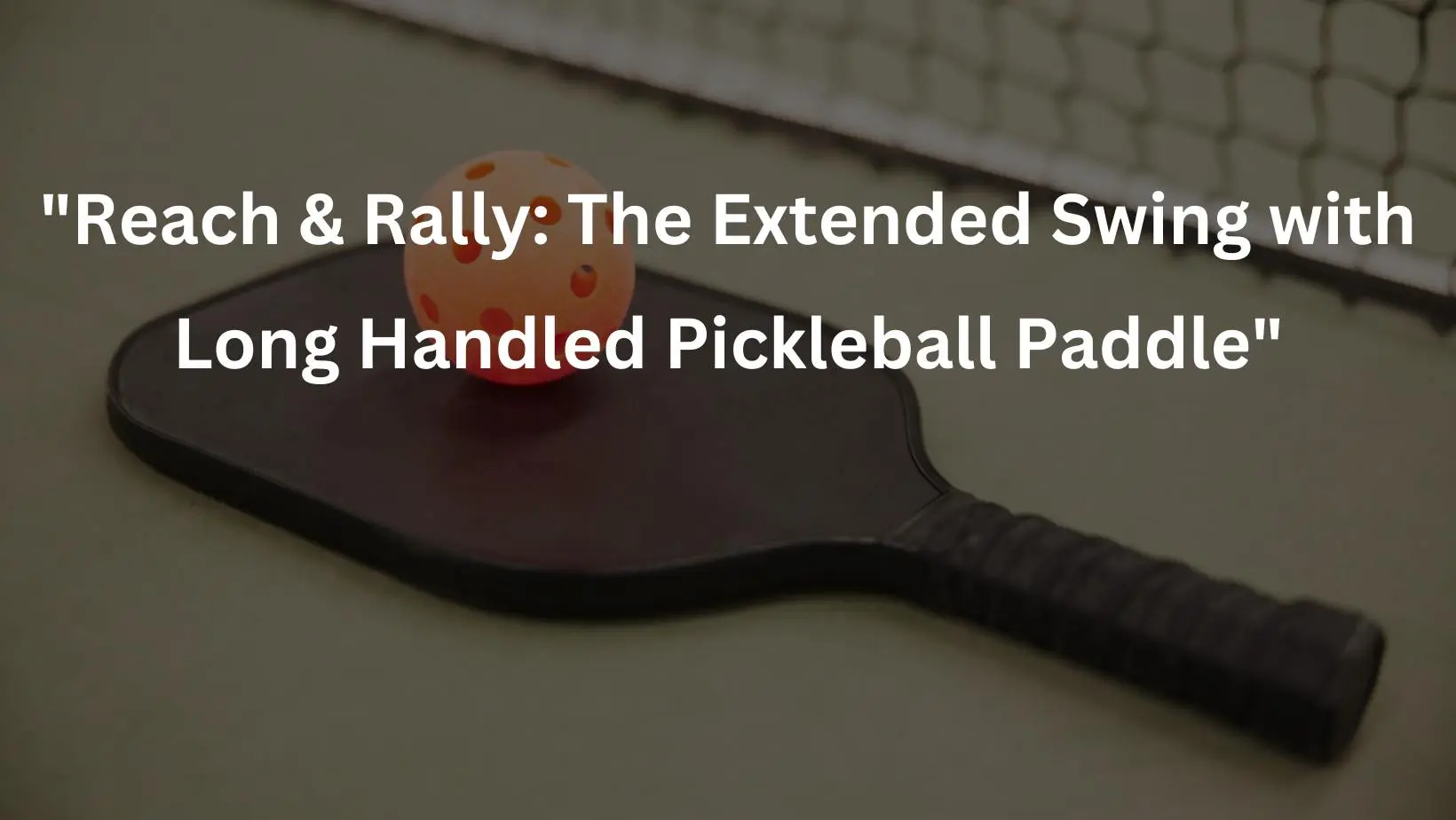Pickleball Stacking Strategy
Pickleball is usually played in doubles, where two players team up against another pair of opponents. In doubles pickleball, there are different strategies and tactics that can help you and your partner win more points and games. One of these strategies is called stacking.
Stacking is a technique that allows you and your partner to stay on your preferred side of the court, regardless of the score. It can help you take advantage of your strengths, hide your weaknesses, and create confusion for your opponents. However, stacking can also be tricky and complicated, especially for beginners. In this article, we will explain what stacking is, why and when to do it, how to do it, and some tips to master it. We will also answer some frequently asked questions about stacking and provide some additional resources for you to learn more.
What is Stacking in Pickleball?
Stacking is a strategy used in pickleball when players on a team are not in traditional positioning and are instead rearranged in order to keep one player on a particular side of the court. Unlike traditional play, the stacking team will start on the same side and then once the serve or return is hit, they shift into the desired positioning.
In traditional pickleball positioning, the player who starts on the right-hand side of the court will switch to the left-hand side after one point is scored, and vice versa. This means that the player on the right-hand side will always serve or receive when the score is even, and the player on the left-hand side will always serve or receive when the score is odd. This also means that each player will have to play both forehand and backhand shots, depending on the side they are on.
However, in stacking, the players can avoid switching sides and stay on the same side of the court throughout the game. For example, if one player wants to stay on the right-hand side of the court (or vice versa), stacking can help them accomplish this. The only rule they have to follow is that the correct server and receiver must be in their designated positions when the serve or return is hit. After that, they can move to their preferred positions and play the rally.
Stacking can be done by both the serving team and the receiving team, but they have different ways of doing it. We will explain how to stack in pickleball in the next section.
Why Stack in Pickleball?
Stacking is a popular pickleball strategy that can give you and your partner some advantages over your opponents. Here are some reasons why you might want to stack in pickleball:
- When your partner plays with the opposite hand as you (think a righty and a lefty), you will want to stack so that both forehands are in the middle of the pickleball court. This way, you can cover more ground and have more power and control over your shots. Having both forehands in the middle also reduces the chances of hitting each other with your paddles or getting in each other’s way.
- When one player has a stronger forehand or backhand than the other, you will want to stack to keep the player with the stronger forehand or backhand toward the middle of the pickleball court. This way, you can use their strength to your advantage and have them hit more shots. For example, if one player has a weak backhand, you can stack to keep their backhand away from the middle and have them play mostly forehand shots.
- When one player has a particular weakness or a particular strength, then stacking could help you emphasize the strength or hide the weakness. For instance, if one player has weak mobility and your opponents are throwing up a lot of lobs, you may want to stack to keep the player with the stronger mobility with the forehand toward the middle of the pickleball court to track down more lobs. Or, if one player has a great drop shot or a great volley, you may want to stack to keep them closer to the net and have them hit more of those shots.
- Where you and your partner have a stronger match up when you are across the net from a particular opponent. For example, if one of your opponents has a weak backhand or a slow reaction, you may want to stack to have your stronger player face them more often and exploit their weakness. Or, if one of your opponents has a strong forehand or a fast serve, you may want to stack to have your better defender face them more often and neutralize their strength.
- When you need to change your strategy and give your opponents a different look and change the momentum of the game. Sometimes, you may find yourself in a rut or a losing streak, and you need to shake things up and try something new. Stacking can be a good way to surprise your opponents and catch them off guard. It can also help you break their rhythm and disrupt their game plan.
When to Stack
Stacking can be a useful pickleball strategy in many situations, but it is not always necessary or beneficial. There are some factors that you should consider before deciding to stack or not. Here are some questions that you should ask yourself and your partner before stacking:
- Do you and your partner have opposite dominant hands (righty and lefty)?
- Do you and your partner have different strengths and weaknesses in your forehand and backhand shots?
- Do you and your partner have different levels of mobility, agility, and endurance?
- Do you and your partner have different preferences for playing close to the net or staying back at the baseline?
- Do you and your partner have a better match up against a specific opponent on the other side of the net?
- Are you and your partner comfortable with switching positions and moving around the court?
- Are you and your partner familiar with the rules and the score of the game?
- Are you and your partner confident and consistent in your serves and returns?
- Are you and your partner able to communicate effectively and clearly with each other?
If you answered yes to most of these questions, then stacking might be a good option for you and your partner. However, if you answered no to most of these questions, then stacking might not be the best choice for you and your partner. Stacking can be confusing and complicated, especially for beginners. It requires a lot of practice, coordination, and communication between partners. It also requires a good understanding of the rules and the score of the game. If you are not comfortable or confident with stacking, you might end up making more mistakes and losing more points than gaining them.
How to Stack in Pickleball
Stacking can be done by both the serving team and the receiving team, but they have different ways of doing it. In this section, we will explain how to stack in pickleball for both teams, using some diagrams and examples. We will assume that the stacking team consists of a right-handed player (R) and a left-handed player (L), and that they want to keep their forehands in the middle of the court. However, you can apply the same principles to any other combination of players and preferences.
Stacking on the Serve
When you are on the serving team, you can stack by having both players start on the same side of the court, standing side by side. The correct server must be in the correct position according to the score, while the partner can stand anywhere on their side of the court. After the serve is hit, the partner will move to the other side of the court and take their preferred position. The server will stay on the same side of the court and play the rally from there.
Here are some examples of how to stack on the serve, depending on the score and the server:
- Lefty is serving from the even side of the pickleball court. The score is 2-2-1, which means that lefty is the first server and the score is even. Lefty must stand on the right-hand side of the court and serve to the right-hand side of the receiver. Righty can stand anywhere on the right-hand side of the court, but preferably close to the center line. After lefty serves, righty will move to the left-hand side of the court and take their position. Lefty will stay on the right-hand side of the court and play the rally from there.
- Lefty is serving from the odd side of the pickleball court. The score is 3-2-1, which means that lefty is the first server and the score is odd. Lefty must stand on the left-hand side of the court and serve to the left-hand side of the receiver. Righty can stand anywhere on the left-hand side of the court, but preferably close to the center line. After lefty serves, righty will move to the right-hand side of the court and take their position. Lefty will stay on the left-hand side of the court and play the rally from there.
- Righty is serving from the even side of the pickleball court. The score is 2-2-2, which means that righty is the second server and the score is even. Righty must stand on the right-hand side of the court and serve to the right-hand side of the receiver. Lefty can stand anywhere on the right-hand side of the court, but preferably close to the center line. After righty serves, lefty will move to the left-hand side of the court and take their position. Righty will stay on the right-hand side of the court and play the rally from there.
- Righty is serving from the odd side of the pickleball court. The score is 3-2-2, which means that righty is the second server and the score is odd. Righty must stand on the left-hand side of the court and serve to the left-hand side of the receiver. Lefty can stand anywhere on the left-hand side of the court, but preferably close to the center line. After righty serves, lefty will move to the right-hand side of the court and take their position. Righty will stay on the left-hand side of the court and play the rally from there.
As you can see, stacking on the serve allows you and your partner to stay on your preferred side of the court, regardless of the score. However, it also requires you and your partner to remember the score and who is serving, as well as to move quickly and smoothly after the serve is hit. If you make a mistake or get confused, you might lose a point or get a fault.
Stacking on the Return-of-Serve
When you are on the receiving team, you can stack by having both players start on the opposite side of the court, standing diagonally across from each other. The correct receiver must be in the correct position according to the score, while the partner can stand anywhere on their side of the court. After the return is hit, the partner will move to the other side of the court and take their preferred position. The receiver will stay on the same side of the court and play the rally from there.
Here are some examples of how to stack on the return-of-serve, depending on the score and the receiver:
- Lefty is returning serve from the even side of the pickleball court. The score is 2-2-1, which means that lefty is the first receiver and the score is even. Lefty must stand on the right-hand side of the court and return the serve from the right-hand side of the server. Righty can stand anywhere on the left-hand side of the court, but preferably close to the center line. After lefty returns the serve, righty will move to the right-hand side of the court and take their position. Lefty will stay on the left-hand side of the court and play the rally from there.
- Lefty is returning serve from the odd side of the pickleball court. The score is 3-2-1, which means that lefty is the first receiver and the score is odd. Lefty must stand on the left-hand side of the court and return the serve from the left-hand side of the server. Righty can stand anywhere on the right-hand side of the court, but preferably close to the center line. After lefty returns the serve, righty will move to the left-hand side of the court and take their position. Lefty will stay on the right-hand side of the court and play the rally from there.
- Righty is returning serve from the even side of the pickleball court. The score is 2-2-2, which means that righty is the second receiver and the score is even. Righty must stand on the right-hand side of the court and return the serve from the right-hand side of the server. Lefty can stand anywhere on the left-hand side of the court, but preferably close to the center line. After righty returns the serve, lefty will move to the right-hand side of the court and take their position. Righty will stay on the left-hand side of the court and play the rally from there.
- Righty is returning serve from the odd side of the pickleball court. The score is 3-2-2, which means that righty is the second receiver and the score is odd. Righty must stand on the left-hand side of the court and return the serve from the left-hand side of the server. Lefty can stand anywhere on the right-hand side of the court, but preferably close to the center line. After righty returns the serve, lefty will move to the left-hand side of the court and take their position. Righty will stay on the right-hand side of the court and play the rally from there.
As you can see, stacking on the return-of-serve allows you and your partner to stay on your preferred side of the court, regardless of the score. However, it also requires you and your partner to remember the score and who is receiving, as well as to move quickly and smoothly after the return is hit. If you make a mistake or get confused, you might lose a point or get a fault.
Stacking on Return vs Stacking on Serve
Stacking on the return-of-serve is different from stacking on the serve in several ways. Here are some of the main differences between the two:
| Stacking on Return | Stacking on Serve |
|---|---|
| You start on the opposite side of the court from your preferred side | You start on the same side of the court as your preferred side |
| You move to your preferred side after the return is hit | You move to your preferred side after the serve is hit |
| You have less time and space to move to your preferred side | You have more time and space to move to your preferred side |
| You have less control over the direction and speed of the return | You have more control over the direction and speed of the serve |
| You have to deal with the pressure and unpredictability of the serve | You have to deal with the pressure and unpredictability of the return |
As you can see, stacking on the return-of-serve is more difficult and risky than stacking on the serve. However, it can also be more rewarding and effective, as it can give you and your partner a better position to attack and win the rally. Therefore, you should weigh the pros and cons of stacking on the return-of-serve before deciding to do it or not.
Tips to Master Stacking in Pickleball
Stacking can be a powerful pickleball strategy, but it also requires a lot of practice, coordination, and communication between partners. Here are some tips to help you master stacking in pickleball:
- Create time and space for your team to move. When you are stacking, you want to create as much time and space as possible for you and your partner to move to your preferred positions. This means that you should try to hit your serve or return deep and high, so that your opponents have to move back and hit the ball later. This will give you and your partner more time and space to move across the court and get ready for the rally.
- Be aware of the gaps. When you are stacking, you are creating gaps on the court that your opponents can exploit. For example, if you are stacking to keep your forehands in the middle, you are leaving the sidelines open for your opponents to hit. Therefore, you should be aware of these gaps and try to cover them as much as possible. You should also anticipate where your opponents might hit and position yourself accordingly. You can also use your paddle to block or deflect any shots that come your way.
- Remember the score. When you are stacking, you have to remember the score and who is serving or receiving at all times. This is because the score determines which side of the court you have to start on and which side of the court you have to move to. If you forget the score or get confused, you might end up in the wrong position or get a fault. Therefore, you should always keep track of the score and repeat it out loud before each point. You can also use a scorekeeper or a wristband to help you remember the score.
- Be prepared to stop. When you are stacking, you have to be prepared to stop moving and play the rally at any moment. This is because your opponents might hit a fast or low shot that you have to react to quickly. If you are still moving or out of position, you might miss the shot or hit a weak shot. Therefore, you should always be ready to stop and balance yourself before hitting the ball. You should also avoid moving too far or too fast, as this might make you lose your balance or momentum.
Other Things to Remember When Stacking
Stacking can be a useful pickleball strategy, but it is not the only one. There are other things that you should remember when stacking, such as:
- Stacking can be confusing. Stacking can be confusing and complicated, especially for beginners. It can also be confusing for your opponents, who might not know what you are doing or why you are doing it. Therefore, you should always be respectful and courteous when stacking, and avoid any arguments or disputes. You should also explain to your opponents what you are doing and why you are doing it, if they ask you or if they seem confused. You can also ask them if they are okay with you stacking or not, as some players might not be comfortable with it or might consider it unfair. You can also check the official pickleball rules or the tournament rules to make sure that stacking is allowed and legal in your game.
- Stacking is not a good pickleball strategy for everyone. Stacking can be a good pickleball strategy for some players and teams, but it is not a good pickleball strategy for everyone. It depends on your skill level, your partner’s skill level, your opponents’ skill level, your preferences, your goals, and your game plan. Therefore, you should not stack just because you see other players doing it or because you think it is cool. You should stack only if it works for you and your partner, and if it helps you win more points and games.
- Stacking is not the only pickleball strategy. Stacking is one of the many pickleball strategies that you can use in your game, but it is not the only one. There are other pickleball strategies that you can use, such as:
- Aiming for the weak spots of your opponents, such as their feet, their backhand, their body, or their gaps.
- Hitting different types of shots, such as drop shots, lobs, volleys, dinks, drives, or smashes.
- Changing the pace, spin, angle, or direction of your shots, to keep your opponents guessing and off balance.
- Moving as a team, to cover the court and support each other.
- Communicating with your partner, to coordinate your moves and signals.
- Having fun and enjoying the game, to stay positive and motivated.
Therefore, you should not rely on stacking as your only pickleball strategy. You should also learn and practice other pickleball strategies, and use them in combination with stacking or instead of stacking, depending on the situation.
Conclusion
Stacking is a technique that allows you and your partner to stay on your preferred side of the court, regardless of the score. It can help you take advantage of your strengths, hide your weaknesses, and create confusion for your opponents. However, stacking can also be tricky and complicated, especially for beginners. It requires a lot of practice, coordination, and communication between partners. It also requires a good understanding of the rules and the score of the game. If you are not comfortable or confident with stacking, you might end up making more mistakes and losing more points than gaining them.
Stacking can be done by both the serving team and the receiving team, but they have different ways of doing it. When you are on the serving team, you can stack by having both players start on the same side of the court, standing side by side. The correct server must be in the correct position according to the score, while the partner can stand anywhere on their side of the court. After the serve is hit, the partner will move to the other side of the court and take their preferred position. The server will stay on the same side of the court and play the rally from there.
When you are on the receiving team, you can stack by having both players start on the opposite side of the court, standing diagonally across from each other. The correct receiver must be in the correct position according to the score, while the partner can stand anywhere on their side of the court. After the return is hit, the partner will move to the other side of the court and take their preferred position. The receiver will stay on the same side of the court and play the rally from there.
Stacking can be a useful pickleball strategy in many situations, but it is not always necessary or beneficial. There are some factors that you should consider before deciding to stack or not, such as your skill level, your partner’s skill level, your opponents’ skill level, your preferences, your goals, and your game plan. You should also be respectful and courteous when stacking, and avoid any arguments or disputes. You should also explain to your opponents what you are doing and why you are doing it, if they ask you or if they seem confused. You should also check the official pickleball rules or the tournament rules to make sure that stacking is allowed and legal in your game.
Stacking can be a powerful pickleball strategy, but it also requires a lot of practice, coordination, and communication between partners. Here are some tips to help you master stacking in pickleball:
- Create time and space for your team to move.
- Be aware of the gaps.
- Remember the score.
- Be prepared to stop.
Stacking is one of the many pickleball strategies that you can use in your game, but it is not the only one. There are other pickleball strategies that you can use, such as aiming, hitting, changing, moving, communicating, and having fun. Therefore, you should not rely on stacking as your only pickleball strategy. You should also learn and practice other pickleball strategies, and use them in combination with stacking or instead of stacking, depending on the situation.
We hope that this article has helped you understand what stacking is, why and when to do it, how to do it, and some tips to master it. We also hope that you have learned some other things to remember when stacking, such as being respectful, checking the rules, and using other strategies. We encourage you to try stacking in your next pickleball game, and see if it works for you and your partner. Remember to have fun and enjoy the game!
FAQ
Here are some frequently asked questions about stacking and their answers:
Is Stacking Legal in Pickleball?
Yes, stacking is legal in pickleball, according to the official pickleball rules. The only rule that you have to follow when stacking is that the correct server and receiver must be in their designated positions when the serve or return is hit. After that, you and your partner can move to any position on the court and play the rally from there. However, some tournaments or leagues might have different rules or restrictions on stacking, so you should always check the rules before you play.
When to Stack
You should stack when you and your partner have opposite dominant hands (righty and lefty), when you and your partner have different strengths and weaknesses in your forehand and backhand shots, when you and your partner have different levels of mobility, agility, and endurance, when you and your partner have different preferences for playing close to the net or staying back at the baseline, when you and your partner have a better match up against a specific opponent on the other side of the net, or when you need to change your strategy and give your opponents a different look and change the momentum of the game.
Does Handedness Matter in Stacking?
Yes, handedness matters in stacking, especially if you and your partner have opposite dominant hands (righty and lefty). This is because you will want to stack to keep both forehands in the middle of the court, which will give you more power and control over your shots. Having both forehands in the middle will also reduce the chances of hitting each other with your paddles or getting in each other’s way. However, you can also stack if you and your partner have the same dominant hand (righty and righty or lefty and lefty), depending on your preferences and goals.
When Not to Stack
You should not stack when you and your partner are comfortable and confident with playing on both sides of the court, when you and your partner have similar strengths and weaknesses in your forehand and backhand shots, when you and your partner have similar levels of mobility, agility, and endurance, when you and your partner have similar preferences for playing close to the net or staying back at the baseline, when you and your partner have a good match up against both opponents on the other side of the net, or when you are winning and dominating the game. You should also not stack if you are not familiar or comfortable with the rules and the score of the game, or if your opponents are not okay with you stacking.





